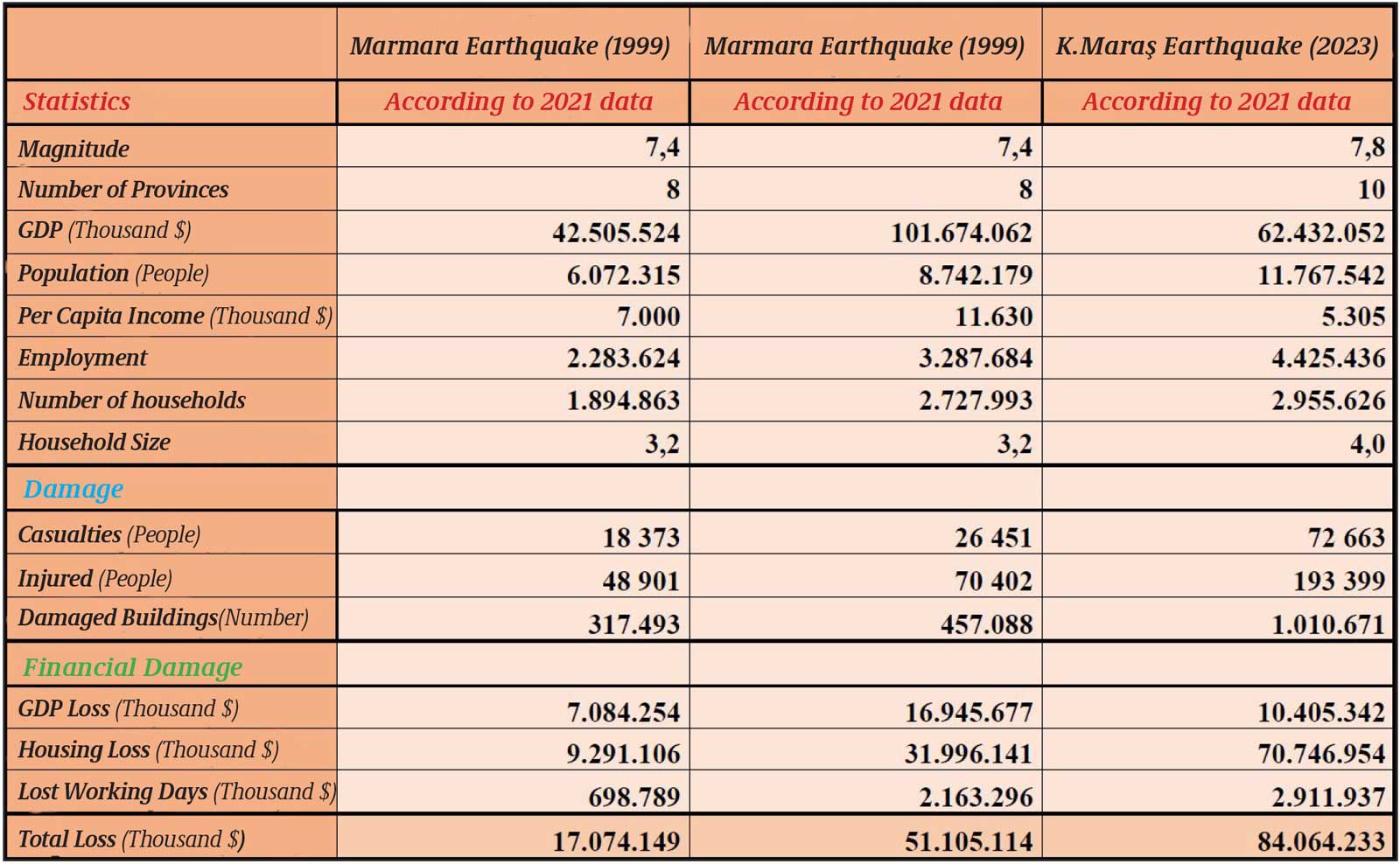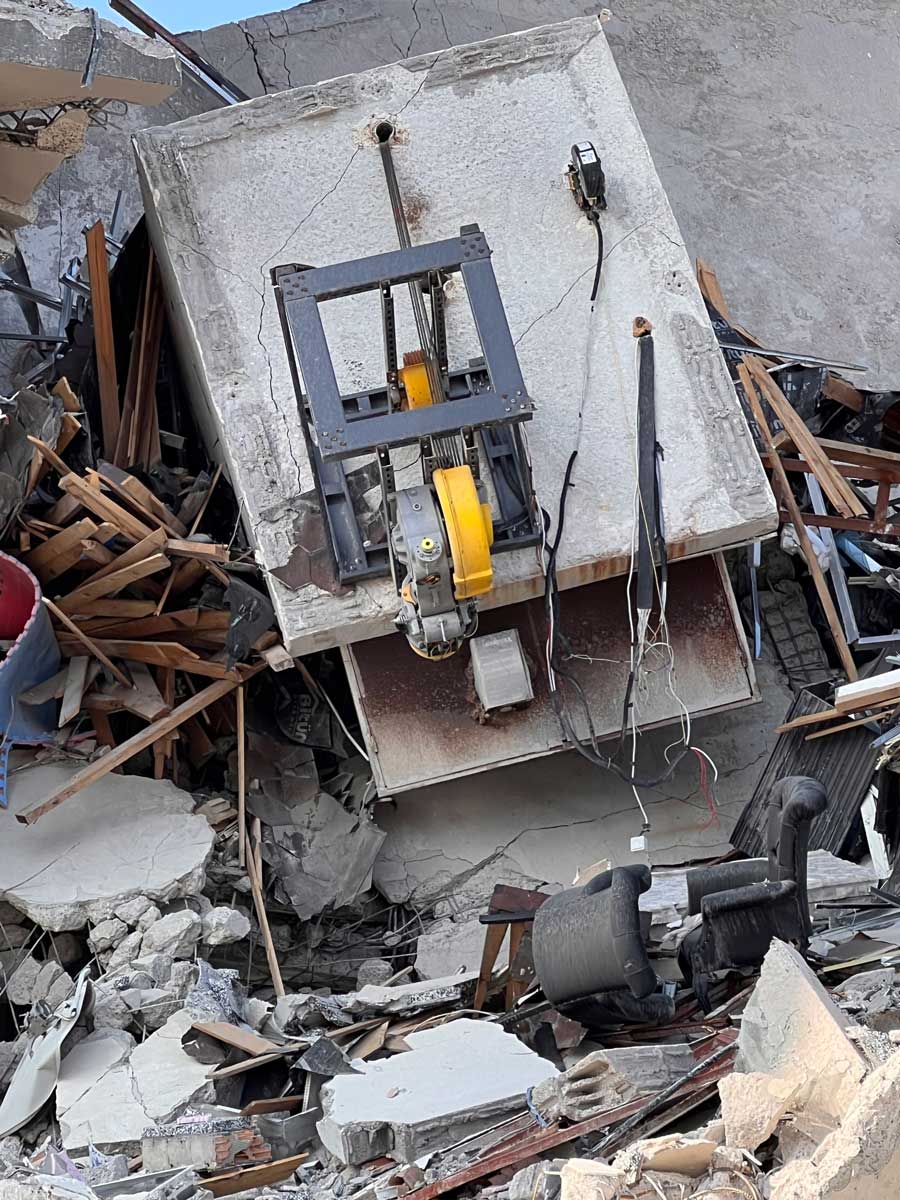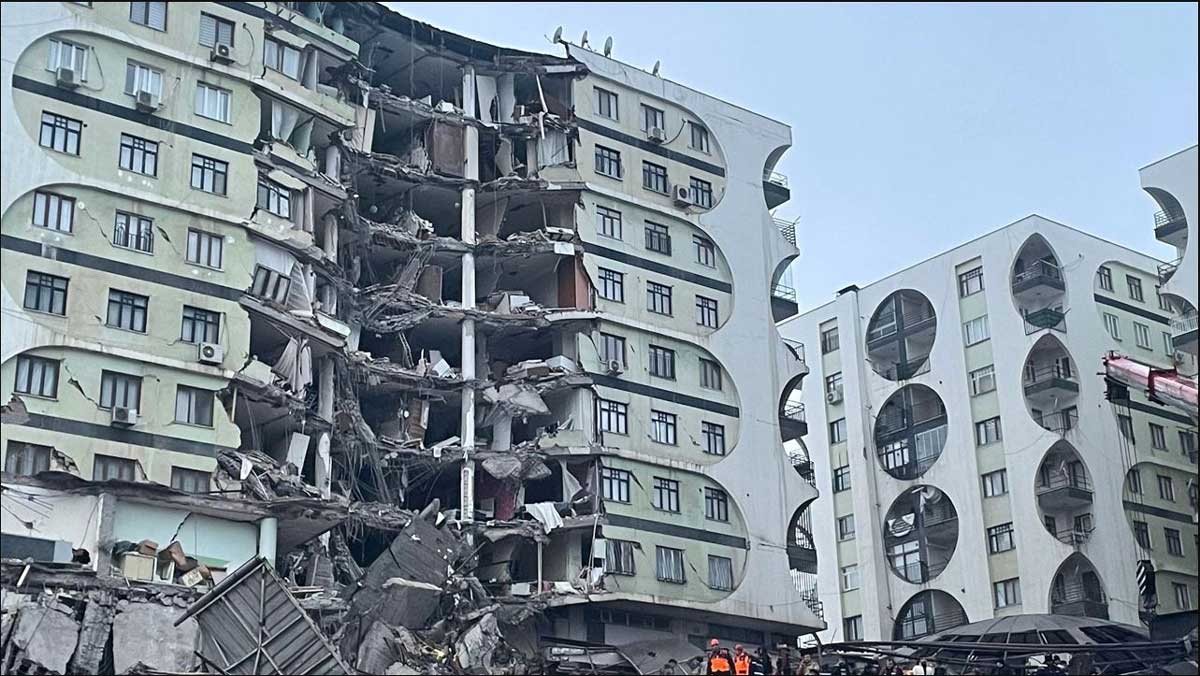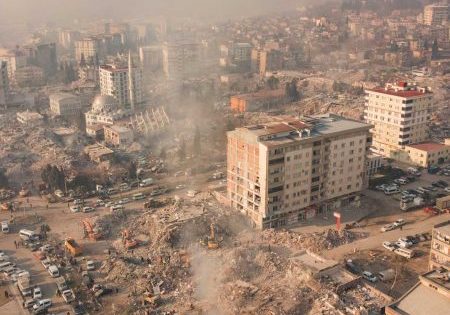Financial Damage of Earthquakes Expected to be US$84.1 Billion
The Turkish Enterprise and Business Confederation (TÜRKONFED) stated that the two major earthquakes centered in Kahramanmaraş will cause financial damage exceeding US$84 billion for the Turkish economy.
On Monday morning, February 6, two earthquakes of magnitude 7.7 in Pazarcık district of Kahramanmaraş at 04:17 and 7.6 in Elbistan district at 13:24 caused devastation in Kahramanmaraş, Hatay, Adıyaman, Diyarbakır, Adana, Osmaniye, Gaziantep, Şanlıurfa, Malatya and Kilis. More than 45,000 people have died and more than 100,000 have been rescued from the rubble as a result of the two devastating back-to-back earthquakes. The earthquakes caused heavy damage in 10 provinces in Turkey, affecting a population of 13.5 million people. In addition to the cities and houses to be renovated, the economic consequences of the earthquake, which deeply affected industrialists and manufacturers especially in Gaziantep, Kahramanmaraş, Malatya and Hatay, are expected to be heavier than anticipated.
TÜRKONFED prepared a report on the economic impact of the earthquakes centered in Kahramanmaraş. The report used data from the Marmara Earthquake and calculated that Kahramanmaraş earthquakes would cause US$84.1 billion in financial damage. In the report, the loss of life in the Marmara Earthquake was calculated as 18,373 casualties and the financial damage was calculated as US$17.1 billion at 1999 exchange rates. With the methodology of using the Marmara earthquake data, it was predicted that the Kahramanmaraş earthquakes would cause 72,663 casualties and US$84.1 billion in financial damage.
Of this projected financial damage, US$70.75 billion was estimated as housing damage, US$10.4 billion as lost national income and US$2.91 billion as lost working days.
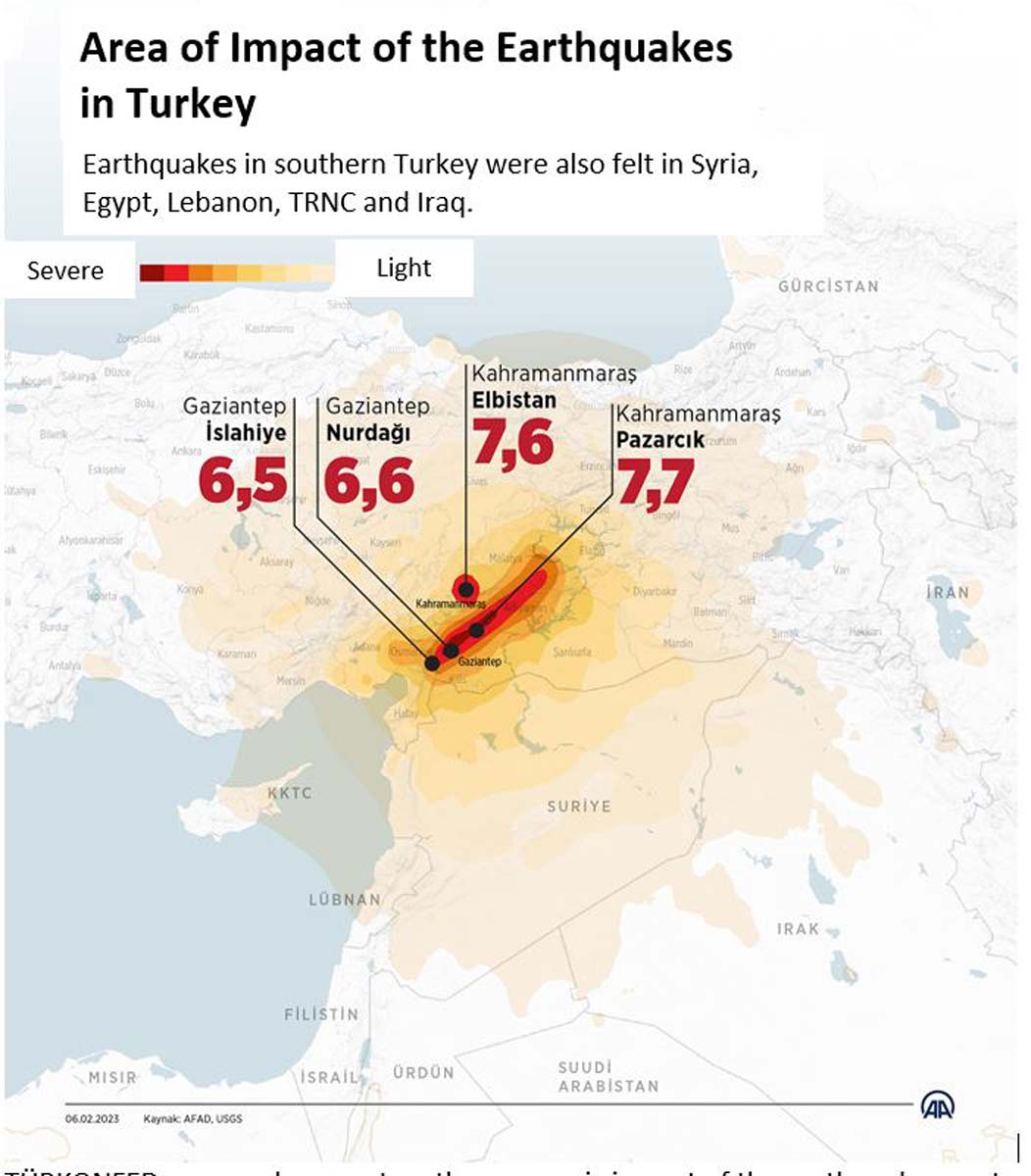
The report estimated that in parallel with the decline in the contribution of provinces to national income, the exports of the 10 disaster-stricken provinces could fall below the level of US$15 billion due to the deterioration of the port infrastructure that supports exports.
Macroeconomic Impact Analysis: 1999-2023 Earthquake Damage Statistics
“The Ratio of Budget Deficit to GDP May Exceed 5.4%”
The report, which also includes findings on the devastation of the earthquake on the central government budget, makes the following statements on the subject:
- The 2023 budget deficit was targeted at TRY$659.6 billion (US$34.9 billion). Bloomberg estimates that public spending on the earthquake could be equivalent to 5.5% of GDP.
- Under current conditions, the budget deficit can be expected to exceed at least TRY$1 trillion (US$52.9 billion).
- Considering that nominal national income is expected to exceed TRY$18 trillion (US$953.4 billion) in 2023, it is quite possible that the budget deficit to GDP ratio will be above 5.4%.
Infrastructure Damages Were Grouped Under Seven Headings
In its report, TÜRKONFED categorized infrastructure damages under the following 7 main headings:
Transportation
Although the General Directorate of Highways announced on February 8 that there are no routes closed to traffic, problems continue on Hatay Airport and Hatay-Reyhanlı road. According to information and images from the field, it is understood that the roads of many districts and villages are not open to transportation. Numerous collapses occurred on roads, especially in Gaziantep, Hatay, Gaziantep-Osmaniye and Adıyaman-Çelikhan. Repairs are ongoing, but road infrastructure needs to be reconstructed at some points.
Electricity
Transformer points were destroyed in substantial parts of the provinces affected by the earthquake, and in some areas the electricity distribution network was damaged to the point of being destroyed. The recommissioning of transformer and grid facilities is expected to take a long time. Although problems have been eliminated in the main energy transmission facilities and lines, problems persist in some districts and provincial centers in the urban distribution parts.
Natural Gas
The earthquake caused explosions in natural gas pipelines and BOTAŞ quickly cut off the flow to Gaziantep, Hatay and Kahramanmaraş. It was announced by the ministry that BOTAŞ’s main distribution lines suffered breakdowns and ruptures, and where repairs were made, the damage occurred again with aftershocks. Controlled and partial natural gas flows started to Adıyaman, Gaziantep and Kahramanmaraş provincial centers. On Friday, February 10, natural gas was supplied to Hatay city center and Kırıkhan district city intake stations.
Oil Pipelines
BOTAŞ stopped the flow of oil to the terminal after the initial earthquake on Monday to inspect the facility, but said no leakage or damage was found. BOTAŞ resumed crude oil flows to the Ceyhan export terminal on the Mediterranean coast late on Tuesday, February 7. The KRG administration also confirmed that the flow of oil continued.
Communication
With 11.5 million mobile subscribers, telecommunication services in provinces and districts in the disaster zone have not completely stopped, but serious disruptions have been experienced. According to the Mobile Telecommunication Operators Association, of which Turkcell, Türk Telekom and Vodafone are members, 2,451 base stations were disabled, 190 mobile stations were dispatched and 3,485 generators were urgently dispatched to the region by the operators to meet the energy needs.
Disruptions continue mostly in villages and towns.
Hospitals
Block A of Iskenderun State Hospital, which received a negative earthquake resistance report in 2012, was used for intensive care services and collapsed with the earthquake. In Hatay province, two public hospitals were destroyed and many private hospitals collapsed or were permanently damaged. The number of destroyed hospitals has not yet been shared by the official authorities, but the need for field hospitals and health workers on the ground has been reported.
Schools
The Ministry of Education has postponed the opening date of all schools in 81 provinces after the semester break. The Ministry announced that schools will open on Monday, February 20, 2023. It was announced that students studying in the 10 provinces affected by the earthquake can transfer to the provinces of their choice. There is no official information on the number of schools destroyed yet.
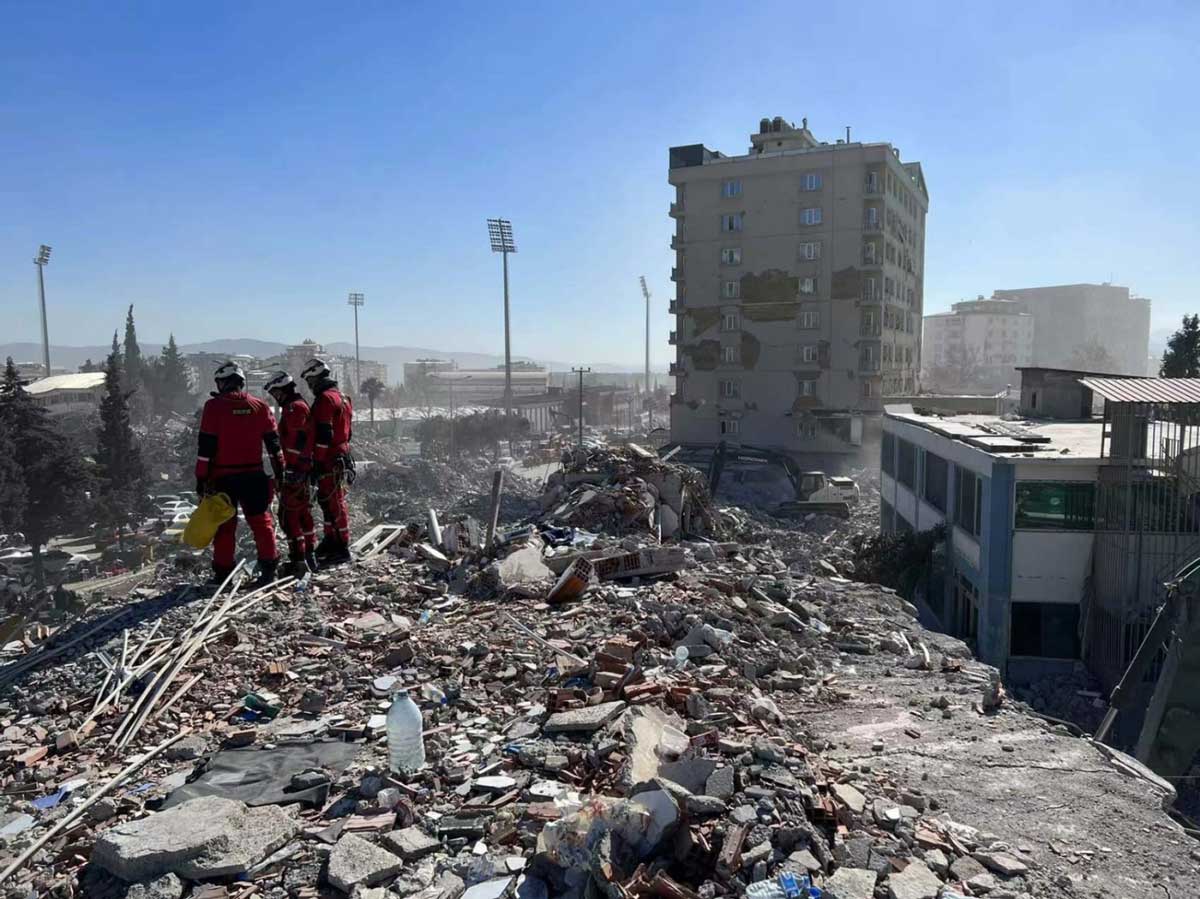
The report also listed recommendations
In its report, TÜRKONFED also listed its recommendations for post-disaster economic recovery.
The report highlighted the following 4 recommendations:
- The economic impacts of the 7.8 earthquake, which has precedents, should be analyzed in detail with respect to macroeconomic and socioeconomic analysis. Impact analyses will help in designing the right policies.
- Earthquake-related legal regulations and organizational management issues should be included in the agenda and opportunities must be provided for organizations “towards a better earthquake-resistant urban planning”.
- In post-earthquake reconstruction and economic rehabilitation processes, the issue should be addressed within the framework of an economic development approach based on market economy.
- A scientific approach should be prioritized in earthquake risk and economic preparedness studies. For example, in a scientific article published on May 30, 2020, co-authored by two Turkish seismologists, Ezgi Karasözen from the University of Alaska and Didem Cambaz from Boğaziçi University, it was pointed out that the 6.8-magnitude Elâzığ earthquake of January 24, 2020 heralded a major rupture in the Eastern Anatolia fault line.
Get more of Elevator World. Sign up for our free e-newsletter.

